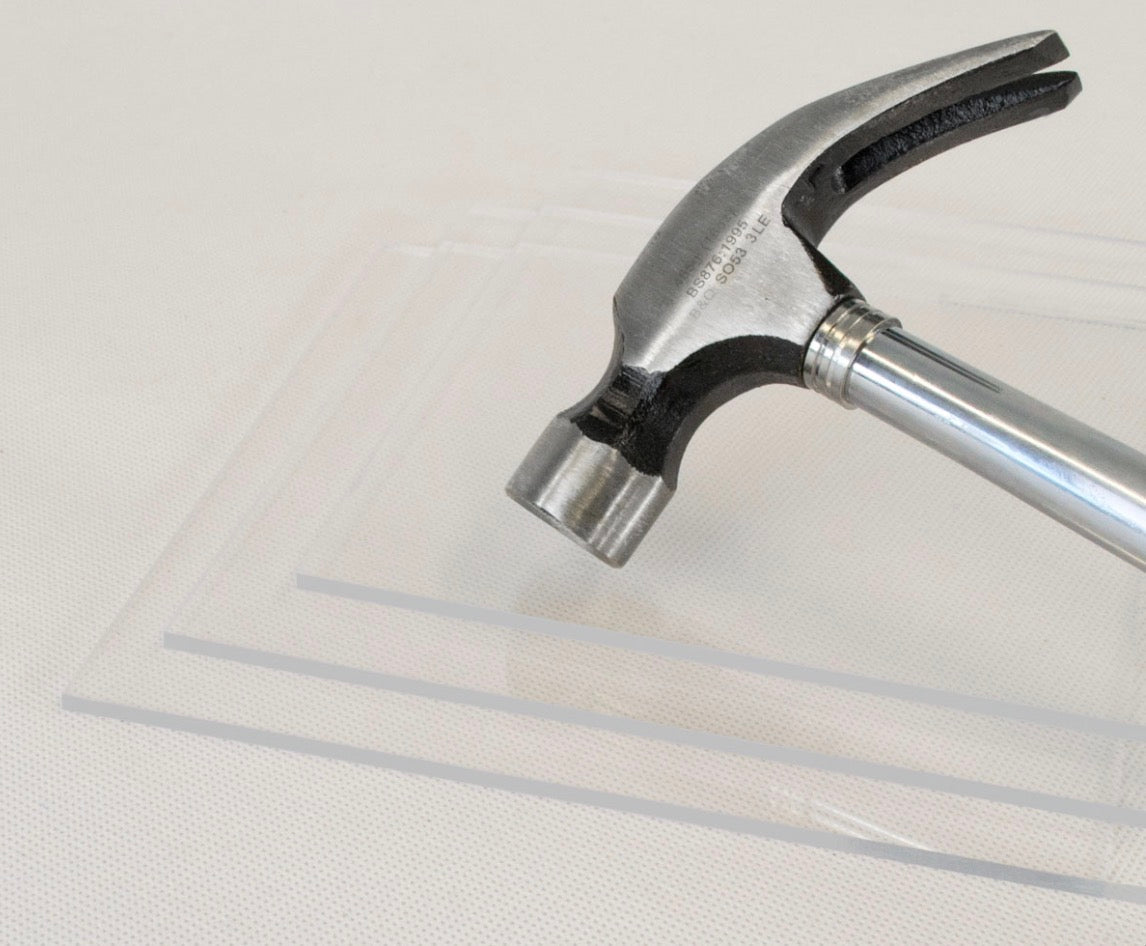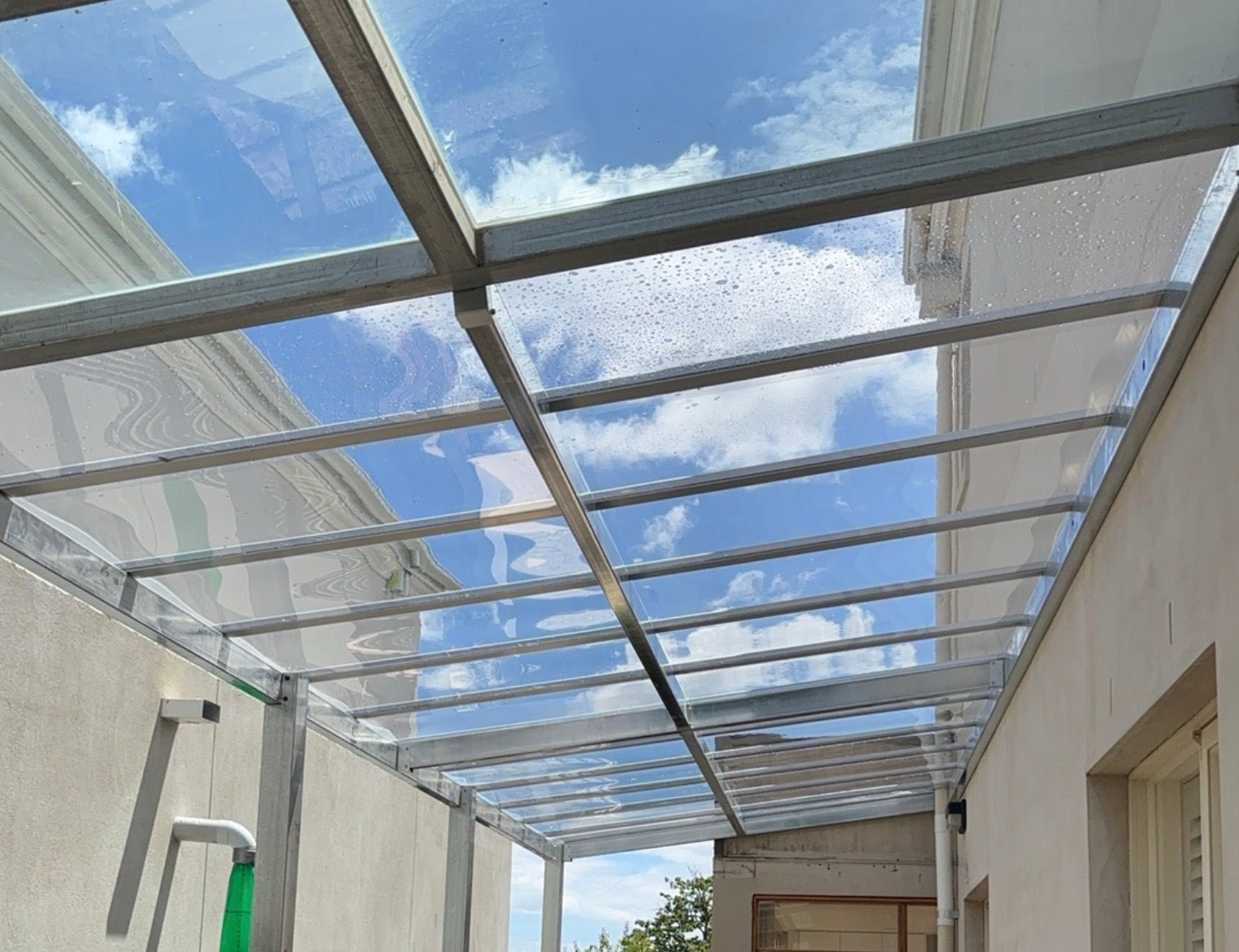Many customers visit our showroom with these questions: what is Perspex sheet? What is the difference between Perspex sheet to Acrylic sheet and polycarbonate sheet? To assist you in making an informed decision for your project, we'll provide a detailed explanation of these plastic materials.

Perspex is a brand name for acrylic sheeting. Also named PMMA, It is a type of transparent thermoplastic known for its clarity, lightweight, and versatility. The term "Perspex sheet" is often used in Melbourne Australia and some other regions to refer to acrylic sheets, similar to how "plexiglass sheet" is used in the United States.

Now, let's discuss the differences between polycarbonate, acrylic sheet, and Perspex and glass.
-
Material Composition:
- Acrylic Sheet (Perspex sheet): Also named PMMA, Acrylic is a type of thermoplastic derived from acrylic acid. There are extruded Acrylic sheet and cast acrylic sheet. It is known for its glass-like clarity, ease of fabrication. Acrylic panels are generally harder and more brittle compared to polycarbonate panels.
-
Polycarbonate sheet: Polycarbonate is another type of thermoplastic, but it is derived from carbonate groups. Most of the polycarbonate sheet is extruded sheet, It is known for its exceptional impact resistance, which is 250 time stronger than glass, 30 times stronger than Acrylic sheet, making it suitable for applications where durability is crucial. Polycarbonate sheeting is more flexible and impact-resistant.

- Glass: Glass is a hard, brittle, and transparent material primarily composed of silica (sand), soda ash, and limestone.
-
Clarity:
- Acrylic Sheet (Perspex sheet): Acrylic sheets generally have excellent optical clarity to 90%-93%, allowing for clear visibility through the material.
- Polycarbonate sheet: While polycarbonate sheet also offers good clarity 88-90%, it may not be as optically clear as acrylic. Over time, polycarbonate sheets may be prone to scratching, which can affect clarity.
-
Glass: Glass provides high optical clarity, can achieve 95%, and does not scratch easily.

-
Impact Resistance:
- Acrylic Sheet (Perspex sheet): Acrylic is more brittle than polycarbonate, It is less impact-resistant compared to polycarbonate. 30 times stronger than glass.
-
Polycarbonate sheet: Polycarbonate is known for its high impact resistance. It is virtually unbreakable and can withstand significant impacts without cracking or breaking. 250 times stronger than glass

- Glass: Glass is hardest, but brittle and can shatter upon impact. It lacks the impact resistance of acrylic and polycarbonate sheeting. 3%- 0.3% self-explosion rate of tempered glass.
-
Weight:
- Acrylic Sheet (PMMA): Acrylic is lighter than glass, making it easier to handle and install. Density: 1.19kg/sqm per mm
- Polycarbonate: Polycarbonate is also lightweight but may be slightly heavier than acrylic. Density: 1.2kg/sqm per mm
-
Glass: Glass is heavier and denser than both acrylic sheeting and polycarbonate sheeting, it’s 5kg per m2 per mm

-
Perspex Fabrication and Plastic Machining:
-
Cutting Acrylic Sheet: Acrylic can typically be cut using standard CNC cutting tools designed for plastics. Laser cutting is also a common method for acrylic due to its precision and clean edges.

-
Cutting Polycarbonate Sheet: Polycarbonate, being more flexible and heat-sensitive, may require specialised CNC cutting tools or processes to prevent melting or warping during cutting. Waterjet cutting or using a specialised CNC router with appropriate cooling mechanisms can be effective.

- Glass: Glass fabrication involves cutting, grinding, and tempering, and it is more rigid and challenging to shape compared to plastics.
-
Cutting Speed and Feed Rates:
- Acrylic generally allows for faster cutting speeds and higher feed rates due to its hardness and brittleness.
- Polycarbonate may require slower cutting speeds and lower feed rates to prevent overheating and maintain cutting precision.
-
Cooling and Chip Removal:
- Acrylic produces chips and swarf during cutting, which can be removed easily.
- Polycarbonate generates more heat during cutting, requiring adequate cooling to prevent melting and maintain dimensional accuracy. Chip removal may be more challenging due to the tendency of melted material to adhere to the cutting tool or workpiece.
-
Edge Finish:
- Acrylic typically produces clean, smooth edges when cut, especially with laser cutting. Acrylic sheet easily gives a glossy polished edge by flame polishing or buff polishing.

- Polycarbonate edges may exhibit some melting or roughness. Polycarbonate does not allow for such easy polishing and will not give as clear an edge.
- Acrylic typically produces clean, smooth edges when cut, especially with laser cutting. Acrylic sheet easily gives a glossy polished edge by flame polishing or buff polishing.
-
Difference in bending Acrylic and Polycarbonate sheet
-
Bending Temperature: Acrylic typically requires a lower bending temperature compared to polycarbonate. The bending temperature for acrylic is generally between 150°C to 180°C (300°F to 350°F). Polycarbonate has a higher softening temperature and usually requires a bending temperature between 150°C to 200°C (300°F to 390°F). Check this blog about Bending polycarbonate sheet.
-
Bending Methods: Acrylic can be bent using various methods, including line bending (with a strip heater), oven bending, or even cold bending with the application of heat. Polycarbonate is often bent using methods such as strip heating, oven bending, or using a hot air gun. However, it's more prone to warping and requires careful control of temperature and bending pressure to prevent distortion.
-
Bending Radius: Acrylic requires a larger bending radius compared to polycarbonate to prevent cracking or crazing. Polycarbonate can be bent to tighter radii without risk of damage, making it more suitable for applications requiring complex shapes.
-
Surface Finish: Acrylic tends to produce smoother and clearer bent surfaces compared to polycarbonate, which may show some surface imperfections or waviness after bending.
-
Post-Bending Stability: Acrylic tends to retain its shape well after bending, especially if proper heating and cooling procedures are followed. Polycarbonate may experience some spring-back or memory effects after bending, requiring additional time or fixtures to hold the desired shape during cooling.
-
-
Cutting Acrylic Sheet: Acrylic can typically be cut using standard CNC cutting tools designed for plastics. Laser cutting is also a common method for acrylic due to its precision and clean edges.
- UV Resistance:
- Acrylic Sheet: Acrylic sheets typically do not have built-in UV protection, and their natural properties may make them vulnerable to UV (ultraviolet) radiation over time. Exposure to UV rays from sunlight can cause acrylic to yellow, become brittle, and degrade in quality.To address this issue and enhance the UV resistance of acrylic sheets, manufacturers often apply coatings or additives during the production process. These coatings or additives act as UV stabilizers, helping to protect the acrylic from the harmful effects of UV radiation. UV-coated acrylic sheets are commonly referred to as UV-resistant or UV-protected acrylic.
- Polycarbonate Sheet: Yes, many polycarbonate sheets come with built-in UV protection to mitigate the harmful effects of ultraviolet (UV) radiation. UV protection is crucial for polycarbonate sheet, especially when it is used in outdoor applications, as prolonged exposure to sunlight can lead to yellowing, loss of transparency, and reduced impact strength over time. Polycarbonate sheets with UV protection are often labelled as "UV-resistant" or "UV-coated." This UV coating or treatment is typically applied during the extrude manufacturing process and helps to block uv and extend lifespan.
- Glass: Glass is naturally UV-resistant.
7, Fire grade:
Polycarbonate sheets:
- Polycarbonate is self-extinguishing or flame retardant material, indicating that the material has properties to resist or slow down the spread of flames. Polycarbonate can be engineered to higher fire grade.
Acrylic sheet (PMMA):
- The fire rating of acrylic can depend on the specific formulation and additives used by the manufacturer. Acrylic is generally considered less heat-resistant and less fire resistant than polycarbonate.

Glass:
- Traditional glass is not combustible and does not contribute to the spread of flames.
- However, the framing or glazing systems around glass can have different fire ratings, and fire-resistant glass is available for applications

8: Work temperature:
The working temperature of acrylic sheets, polycarbonate sheets, and glass can vary, and each material has its own temperature limitations. Here are general guidelines for the working temperature of each material:
Acrylic (PMMA):
- Acrylic sheets have a working temperature range of approximately -40°C to 80°C (-40°F to 176°F).
- Acrylic starts to soften and lose some of its mechanical properties at higher temperatures, so it is important to avoid prolonged exposure to temperatures near or above its upper limit.
- Polycarbonate sheets have a broader working temperature range compared to acrylic.
- The typical working temperature range for polycarbonate is approximately -40°C to 120°C (-40°F to 248°F).
- Polycarbonate has better high-temperature resistance than acrylic and maintains its impact strength at lower temperatures.
- Glass has a high working temperature range and can withstand much higher temperatures than acrylic and polycarbonate.
- Glass does not have a specific melting point but can begin to soften at extremely high temperatures. Its deformation and softening temperatures are well above typical ambient conditions.
9, Cost
The cost of acrylic panels, polycarbonate panels, and glass can vary based on factors such as thickness, size, quality, and any additional features or treatments. Here's a general comparison of the cost range for these materials
Acrylic sheet (PMMA):
- Acrylic is generally more affordable than polycarbonate and glass.
- The cost of acrylic sheets can range from $20 to $150 per square meter, depending on factors like thickness and brand.
- The cost may also vary based on whether the acrylic is standard, impact-resistant, UV-resistant, or has other special features
- Polycarbonate tends to be more expensive than acrylic but offers higher impact resistance.
- The cost of polycarbonate sheets can range from $30 to $200 per square meter.
- Factors such as thickness, UV protection, and specific features like multiwall construction can influence the price.
- Glass is typically more expensive than both acrylic and polycarbonate.
- The cost of glass can range from $50 to $500 or more per square meter, depending on factors such as type (float, tempered, laminated), thickness, and any additional treatments like low-E coatings.
- Specialty glass, such as low-iron glass or fire-resistant glass, may have higher costs.

8, Applications:
- Acrylic Sheet: Commonly used for displays, signage, protective barriers, and DIY projects, mainly indoor application.
-
Polycarbonate Sheet: Ideal for applications requiring high impact resistance, such as safety glazing, bulletproof windows, and outdoor structures like pergola roofing, skylight, awning, polycarbonate cladding, polycarbonate Façade

- Glass: Widely used in windows, doors, mirrors, and architectural applications.
9, Colour selection of Perspex Sheet
Polycarbonate sheets have limited colour selection while perspex sheet is available in a wide variety of colours.
In summary, while acrylic sheet (Perspex) and polycarbonate share some characteristics, such as being transparent thermoplastics, they have distinct differences in terms of impact resistance, clarity, and applications. The choice between them depends on the specific requirements of the project.




1 comment
Ajo
I am looking for a table top to my rectangle shaped table top (2400mm X 1200mm) straight edges
Location Cranbourne
I am looking for a table top to my rectangle shaped table top (2400mm X 1200mm) straight edges
Location Cranbourne